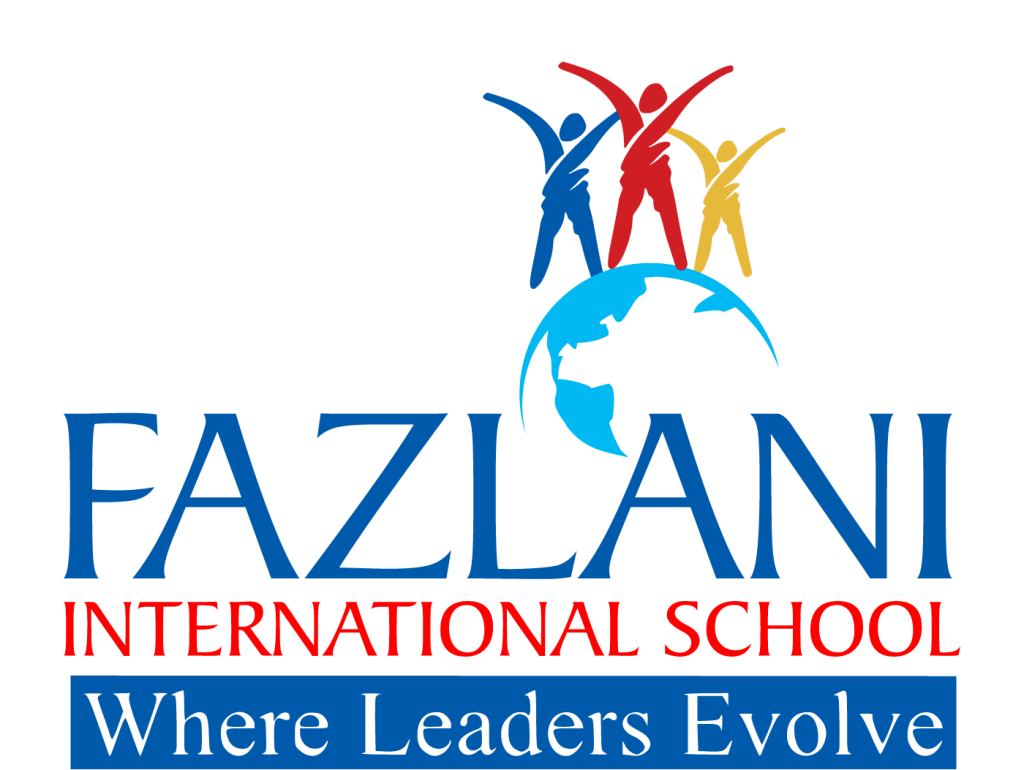Curriculum
| PRIMARY | SECONDARY | SENIOR SECONDARY | |
|---|---|---|---|
| MEDIUM OF INSTRUCTION | English | English | English |
| SUBJECTS | English, Hindi, Marathi, Mathematics, Social Science, Science, Information Technology, Physical & Health Education, Work education and Art Education | English, Hindi, Mathematics, Social Science, Science | Languages, Humanities, Mathematics, Science and Technology, General Studies, and Health and Physical Education |
| LANGUAGES | English, Hindi, Marathi | English, Hindi | English, Hindi |
EVALUATION SYSTEM:
The academic session is divided into two terms. The first term commences from April and terminates by the end of October. The second term begins in November and ends in March of the subsequent year. Each term has one Periodic Test and one Semester examination.
| Marks Range | 91-100 | 81-90 | 71-80 | 61-70 | 51-60 | 41-50 | 33-40 | 32 and below |
| Grade | A1 | A2 | B1 | B2 | C1 | C2 | D | E |
| Grade Point | 10.0 | 9.0 | 8.0 | 7.0 | 6.0 | 5.0 | 4.0 | – |
| Grade | A | B | C | D | E |
| Connotation | Outstanding | Very Good | Good | Fair | Average |
The break-up of assessment is as below:
Term 1: PT1 (10%) + S1 (40%)
Term 2: PT2 (10%) + S2 (40%)
Periodic Test (PT) 1+2= 20%
Semester Exams (S) 1+2 = 80%
| Grade | English | Gramm. | Hindi | Marathi | Maths | Science/EVS | SST | IT |
| I | Exploring English Multi Skill Course-Collin’s | Everyday English Grammar-Viva Publication | Snehprabha Orion Vishv Books | – | Start Up With Maths- Viva Publication | Learnwell Environmental Studies- Holy Faith International | – | Viva Dot Com- Computer Science & Information Technology |
| II | Exploring English Multi Skill Course-Collin’s | Everyday English Grammar-Viva Publication | Snehprabha Orion Vishv Books | – | Start Up With Maths- Viva Publication | Learnwell Environmental Studies- Holy Faith International | – | Viva Dot Com- Computer Science & Information Technology |
| III | Exploring English Multi Skill Course-Collin’s | Everyday English Grammar-Viva Publication | NCERT | Sulabh Bharti | Start Up With Maths- Viva Publication | Learnwell Environmental Studies- Holy Faith International | – | Viva Dot Com- Computer Science & Information Technology |
| IV | Exploring English Multi Skill Course-Collin’s | Everyday English Grammar-Viva Publication | Snehprabha Orion Vishv Books | Sulabh Bharti | Smart Math-Radical book | Start Up With Science- Viva Publication | Viva Publication | Viva Dot Com- Computer Science & Information Technology |
| V | Exploring English Multi Skill Course-Collin’s | Everyday English Grammar-Viva Publication | Snehprabha Orion Vishv Books | Sulabh Bharti-Grade 5(SSC Board) | Smart Math-Radical book | Start Up With Science- Viva Publication | Viva Publication | Viva Dot Com- Computer Science & Information Technology |
| VI | NCERT | Everyday English Grammar-Viva Publication | NCERT | Sulabh Bharti-Grade 6(SSC Board) | NCERT | NCERT | NCERT | Viva Dot Com- Computer Science & Information Technology |
| VII | NCERT | Everyday English Grammar-Viva Publication | NCERT | Sulabh Bharti-Grade 7(SSC Board) | NCERT | NCERT | NCERT | Viva Dot Com- Computer Science & Information Technology |
| VIII | NCERT | Everyday English Grammar-Viva Publication | NCERT | Sulabh Bharti-Grade 8(SSC Board) | NCERT | NCERT | NCERT | Viva Dot Com- Computer Science & Information Technology |
EVALUATION SYSTEM:
The Academic session is divided into Board Examination for (class X) and Annual examination (class IX). Both the exams are of 80 marks.
| A1 | A2 | B1 | B2 | C1 | C2 | D1 | D2 | E |
| Top 1/8th of the passed candidates | Next 1/8th of the passed candidates | Next 1/8th of the passed candidates | Next 1/8th of the passed candidates | Next 1/8th of the passed candidates | Next 1/8th of the passed candidates | Next 1/8th of the passed candidates | Next 1/8th of the passed candidates | Failed candidates |
| Grade | A | B | C | D | E |
| Connotation | Outstanding | Very Good | Good | Fair | Average |
| Co Scholastic | Product | Process |
| Health and Physical Education | Overall fitness | Participation, team-spirit, commitment and honest effort. |
| Art Education | Expression, creativity and Aesthetic appeal | Participation, cooperativeness, patience, systematic approach, neatness and cleanliness in work and work place and devotion and honest effort in work |
| Grade | A | B | C | D | E |
| Connotation | Outstanding | Very Good | Good | Fair | Average |
Internal Assessment (20 Marks)
Internal Assessment (IA), emphasizing assessment of learning through multiple approaches, comprises Periodic Tests (PT) with weightage of 10 marks, Notebook Submission of 5 marks and Subject Enrichment Activities of 5 Marks.
External Assessment (80 Marks)
The break-up of assessment is as below: PT1 (10%) + PT2 (10%)
Periodic Test (PT) 1+2 = 20%
Final Exams (S) 1+2 = 80%
| Grade | English | Gramm. | Hindi | Marathi | Maths | Science/EVS | SST | IT |
| IX | NCERT | NCERT | NCERT | – | NCERT | NCERT | NCERT | – |
| X | NCERT | NCERT | NCERT | – | NCERT | NCERT | NCERT | – |
EVALUATION SYSTEMFor the purpose of fostering competences in learners, the curriculum encompasses nine major learning areas.These areas are broadly divided into Scholastic and Co-scholastic areas as detailed below. The curriculum envisages individualized personal learning acumen and seeks to explore the potential of students in acquiring substantial acknowledge and skills through academic rigors. With greater academic orientation and research skills in core academic areas, students would evolve as discerning young adults with a sense of real self-estimate having true values and principles. The scholastic areas are as follows: (i) Language: English. The curricula in languages focus on listening, speaking, reading and writing skills and, hence, develop effective communicative proficiencies. Learners use language to comprehend, acquire and communicate ideas. (ii)Science and Technology (Subjects related to Biology, Chemistry, Physics, Computer Science and related subjects) include gaining knowledge about matter and energy, nature, the environment, technology, breakthroughs in science. The focus is on knowledge and skills to develop a scientific attitude and to use and apply such knowledge for improving the quality of life. This learning can be used to analyse, evaluate, synthesize and create. Learners understand and appreciate the physical, biological and technological world and acquire the knowledge and develop attitude, skills and values to make rational decisions in relation to it. (iii)Mathematics includes acquiring the concepts related to number sense, operation sense, computation, measurement, geometry, probability and statistics, the skill to calculate and organize, and the ability to apply this knowledge and acquired skills in their daily life. It also includes understanding of the principles of reasoning and problem solving. Learners identify, integrate and apply numerical and spatial concepts and techniques. They have clarity of concepts and are able to connect them to the real world. Learners rationalize and reason about pre-defined arrangements, norms and relationships in order to comprehend, decode, validate and develop relevant patterns. (iv) Commerce (Business Studies, Accountancy, Economics and related subjects) includes gaining understanding about core business disciplines like the exchange of items of value or products between persons or companies and any such exchange of money for a product, service, or information is considered a deal of commerce. It is a well-known fact that only a healthy child can learn effectively and good health status leads to better learning. Many other activities are necessary for development of the affective and psychomotor domain. Those activities like games and sport, art and music, craft work etc. are termed as co-scholastic activities. Instead of co-curricular activities, the term co-scholastic activities are used as both cognitive and non-cognitive development can take place by exposing the child to the lesson on scholastic subjects and non-scholastic subjects. General Studies, Health and Physical education, yoga, traditional games, indigenous sports, NCC, Scouts and Guides, Martial Arts etc. will be integral part of the curriculum and would be in the routine of the schools for the holistic development of children as per the specific details given below:
2. Health and Physical Education focuses on holistic development, both mental and physical, understanding the importance of physical fitness, health, well-being and the factors that contribute to them. Focus of this area is on helping learners develop a positive attitude and commitment to lifelong, healthy active living and the capacity to live satisfying, productive lives with the help of health management, indigenous sports, and yoga, self-defence, fitness and lifestyle choices. 1. ASSESMENT FOR ENGLISH
2. ASSESMENT FOR SCIENCE AND TECHNOLOGY (Subjects related to Biology, Chemistry, Physics, Computer Science and related subjects) 3. ASSESSMENT FOR MATHEMATICS 4. ASSESSMENT FOR COMMERCE |

